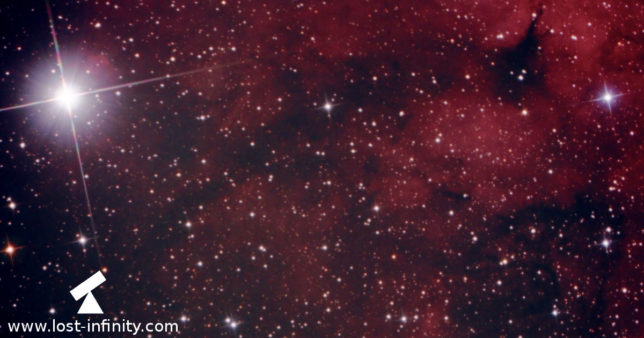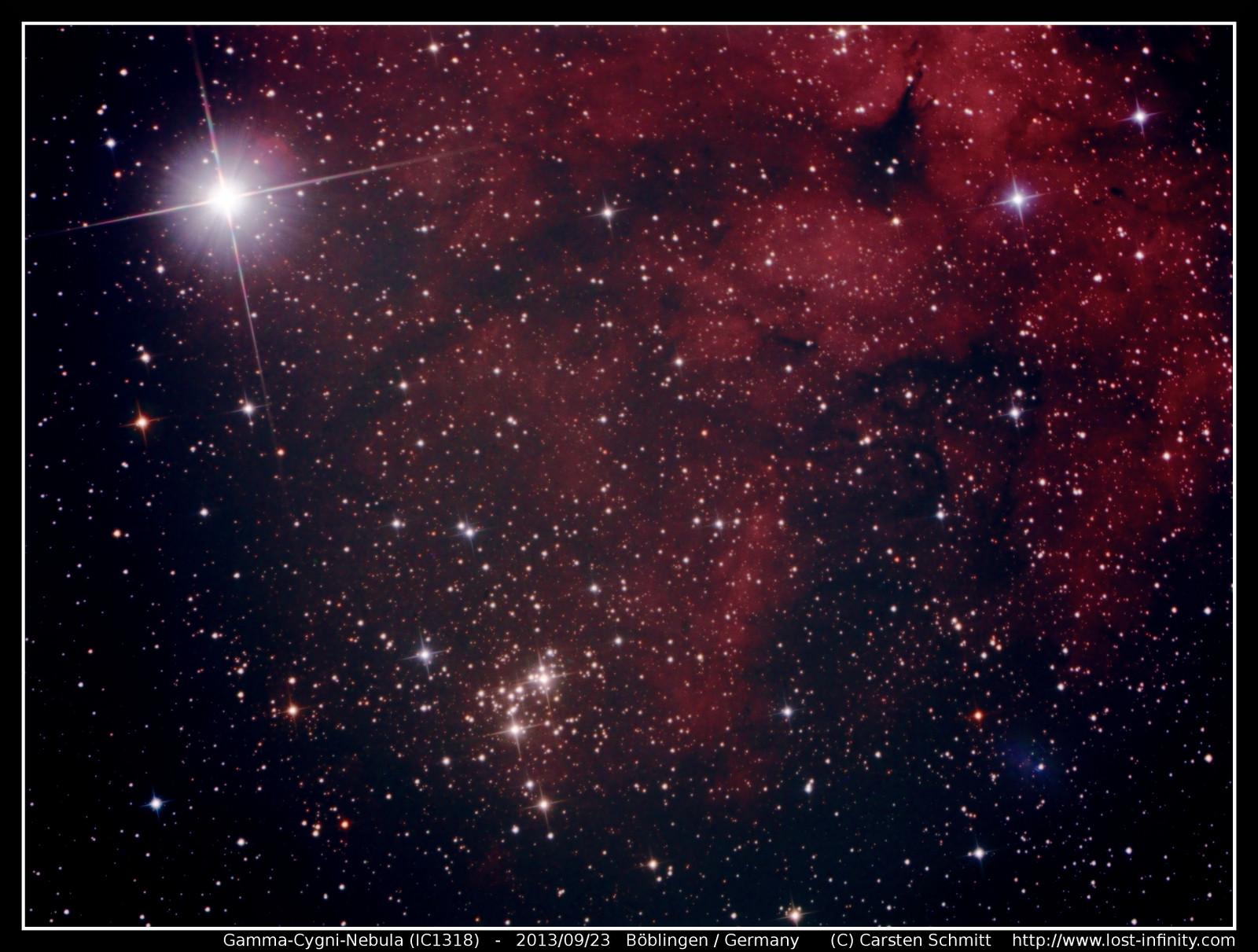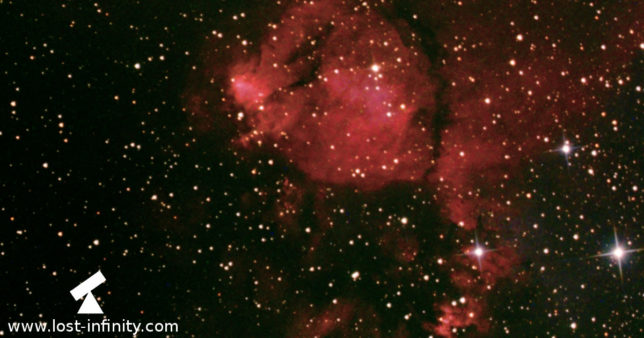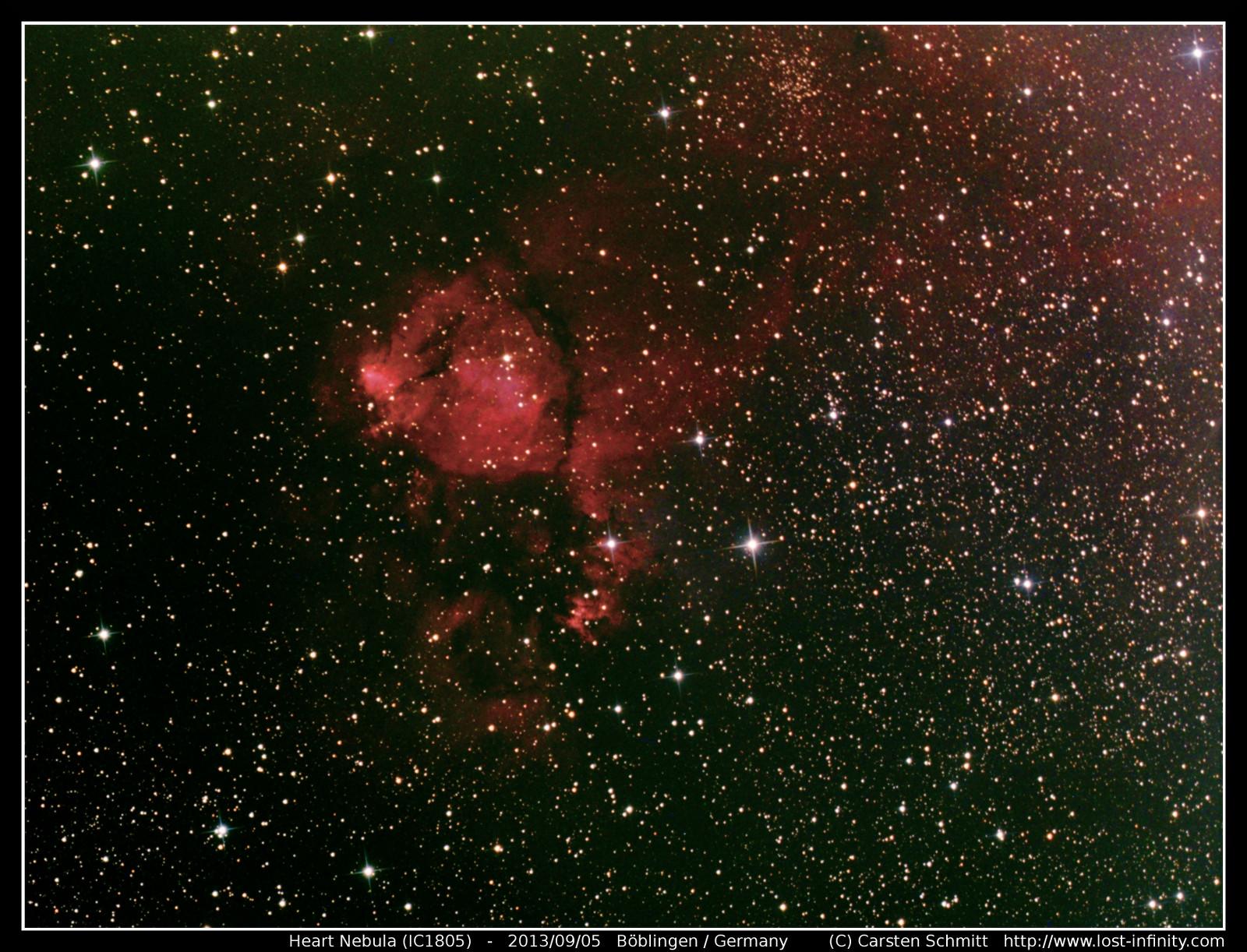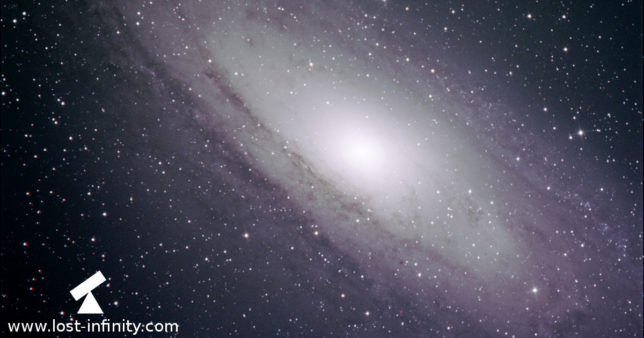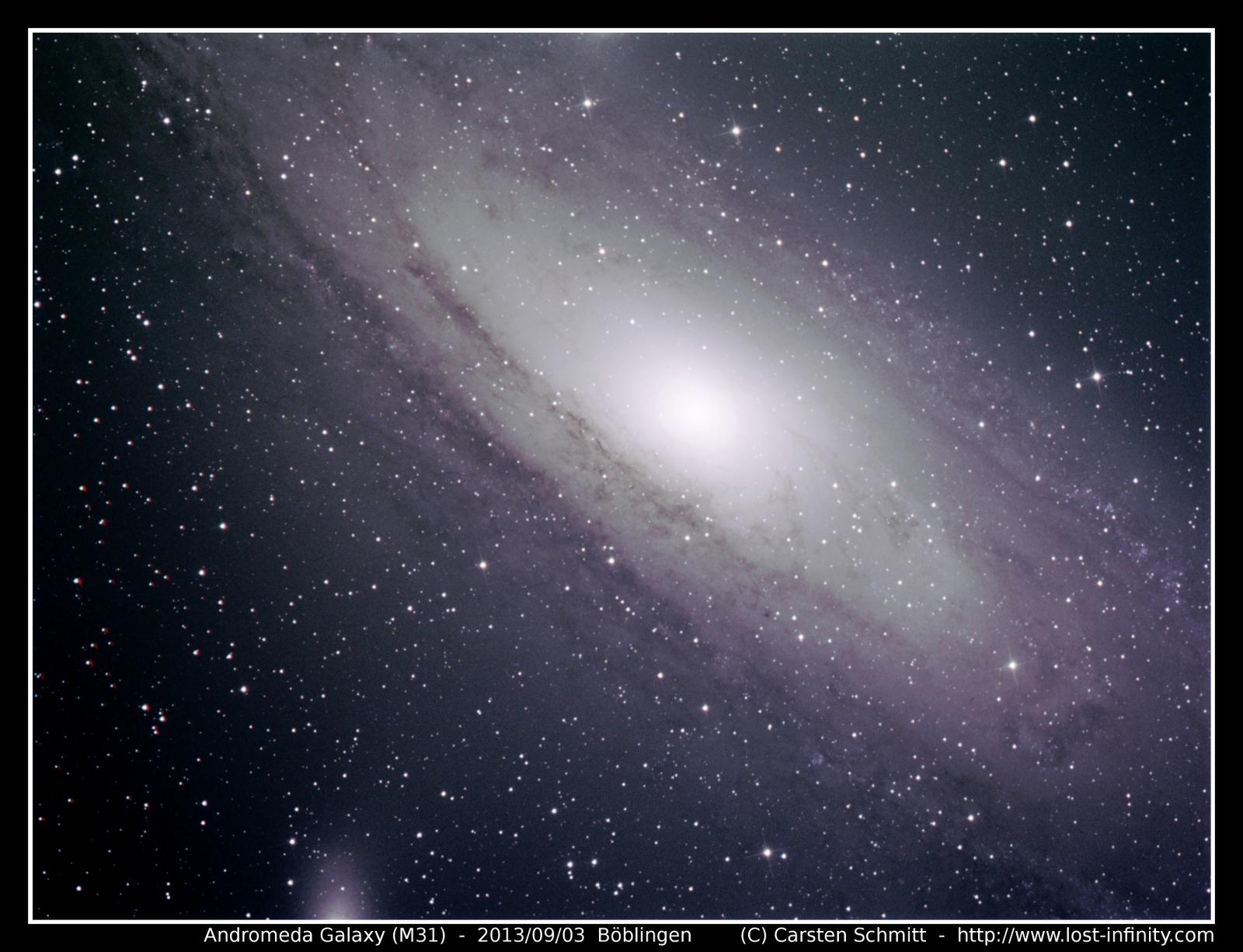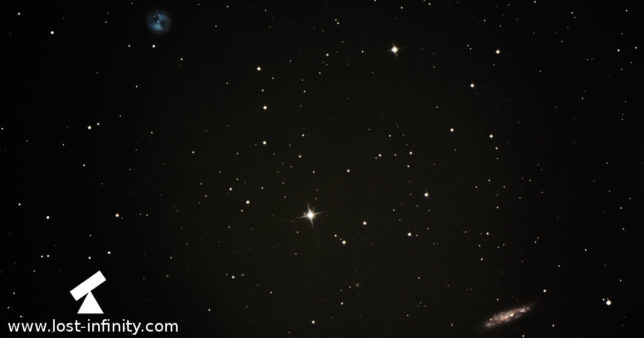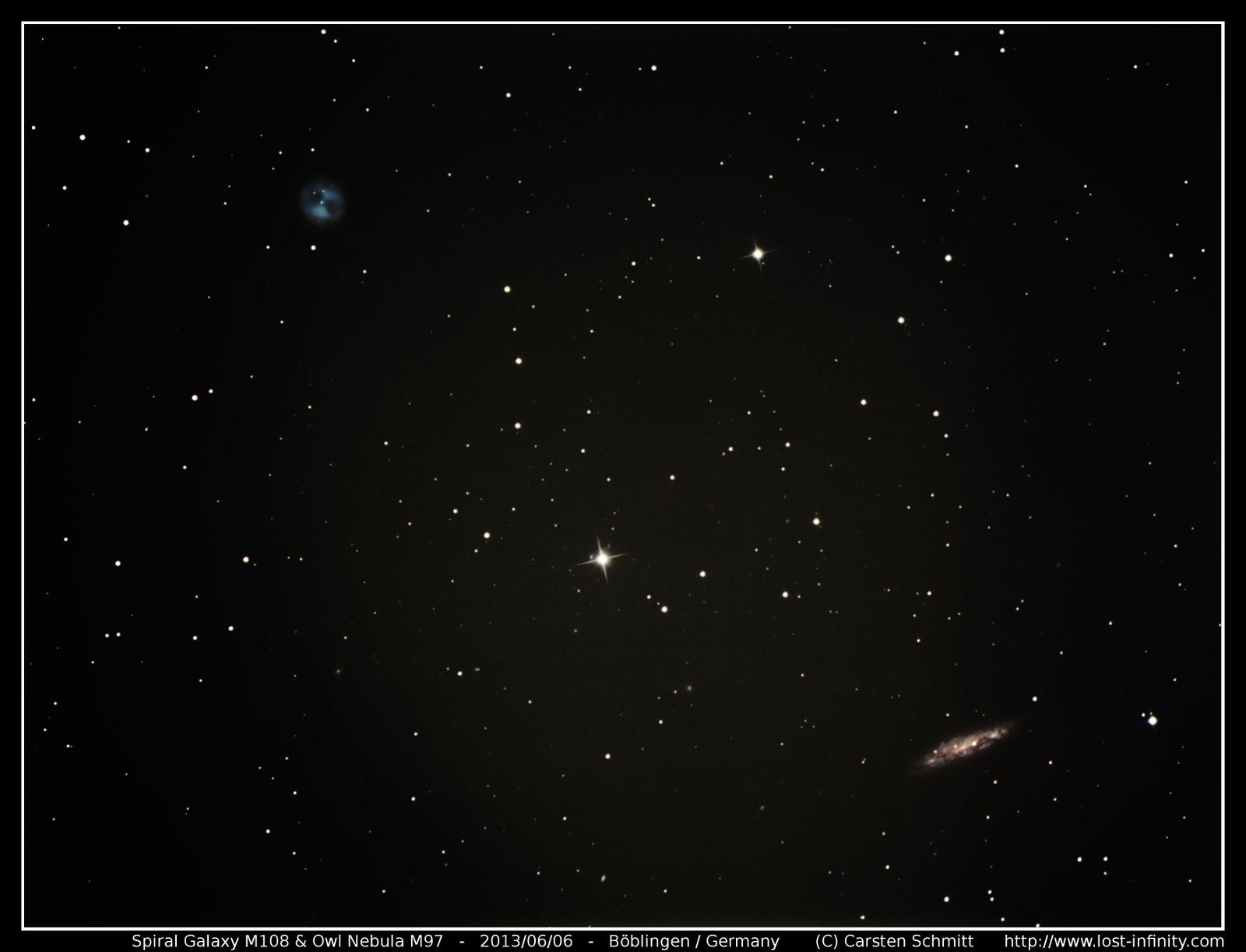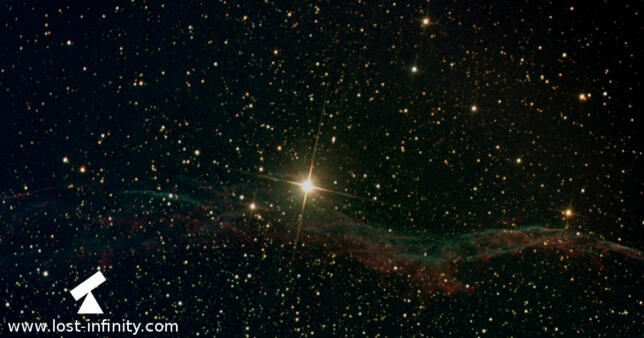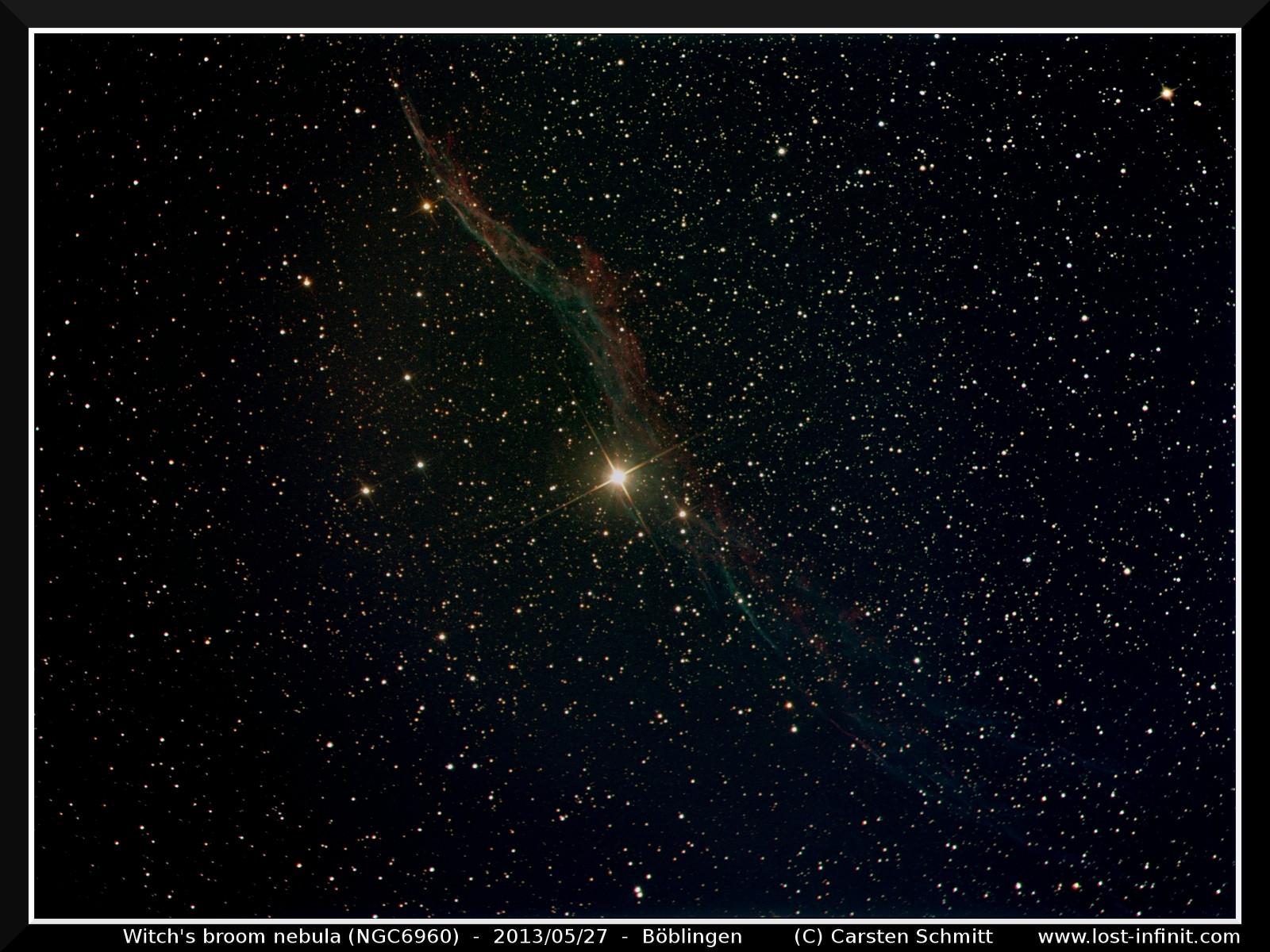Gamma-Cygni-Nebula (IC1318) – also known as Sadr Region – is a diffuse emission nebula in constellation Cygnus. It is about 1500 ly away from earth. It was discovered 1893 by Edward Barnard (not to be confuse with Edward Bernays …), an astronomer from the US. He was one of the pioneers of astrophotography.
 | Date | 2013/09/23 |
 | Location | Böblingen / Germany |
 | Object | Gamma-Cygni-Nebula (IC1318) |
 | Camera | Atik383L+ |
 | Guiding | yes, DMK31AU03.AS via OAG |
 | Telescope | 8" GSO Newtonian |
 | Barlow lens | none |
 | Mount | EQ6Syntrek |
 | Cooling | -15°C |
 | Luminance | 3x 800s, bin: 1x1 |
 | Red | 3x 200s, bin: 2x2 |
 | Green | 3x 200s, bin: 2x2 |
 | Blue | 2x 200s, bin: 2x2 |
 | Dark | 4x |
 | Flat | - |
 | Total exposure | ~1h06min. |
The bright star to the top left corner is Gamma Cygni, forming the intersection of an asterism of five stars called the Northern Cross. According to latest measurements it is approximately 1800 ly away from the sun.
The image is also available in full resolution.
Clear skies!
Last updated: June 20, 2022 at 10:27 am




























